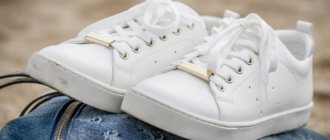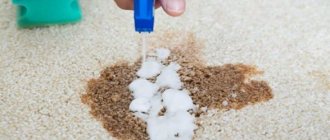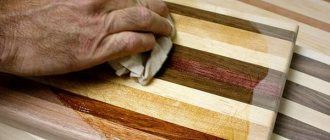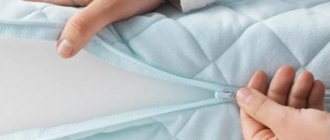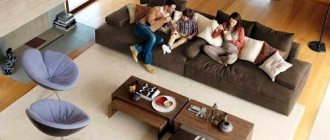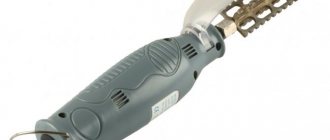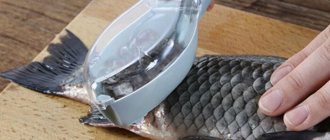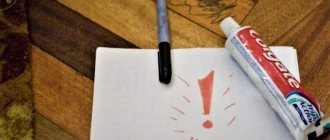Rub the board with half a lemon, pressing it firmly onto the surface.
Take the second part of the lemon and rub it on the board again, rubbing the salt.
Wash the board under running warm water. Then dry it. Now she looks like new!
To consolidate the result, you can oil the wooden board. To do this, use Vaseline oil or food-grade beeswax. These products can be purchased at the pharmacy. Apply any of these to a dry and clean cutting board and leave for a couple of hours, then wipe it well.
A cutting board for cutting food in the kitchen is an indispensable item. This item is environmentally friendly, it is convenient to store, but it has one significant drawback. Such cutting boards get dirty very quickly and require some care. But even this does not make the board less popular than modern cutting boards made of glass, silicone or plastic. And it seems that giving up their positions is not part of their plans.
The most incredible way to get my hair back!
This is just a DISASTER ! And after all, my hair did not start falling out in one day, but systematically - day after day I watched how the hair left my head: while combing, washing, even while sleeping. (read more…)
8 working ways to clean a cutting board using available products
As you can see, any of these methods will help tidy up your kitchen appliances, and most importantly, without the use of harmful chemicals.
Expert opinion
Ekaterina Korneva, expert in the field of care, cleanliness and beauty
I will help you understand all the intricacies.
Sometimes dirt eats into the fibers so much that it is not possible to wash them using conventional means. And now, not so long ago, the kettle you bought no longer shines, the pots are covered with a layer of grease, and the cutlery has darkened with time. How to clean a wooden cutting board? For any questions, please contact me, I will be happy to answer!
How to clean and remove odor from a wooden cutting board
- Buy a three percent solution of hydrogen peroxide or Chlorhexidine at the pharmacy and pour it onto the board.
- Using a clean kitchen sponge, spread the solution evenly over the entire surface, including the sides.
- After 10 minutes, rinse the solution with water and dry with a paper towel.
To consolidate the result, you can oil the wooden board. To do this, use Vaseline oil or food-grade beeswax. These products can be purchased at the pharmacy. Apply any of these to a dry and clean cutting board and leave for a couple of hours, then wipe it well.
How to disinfect a wooden device
In addition to cleaning and eliminating unpleasant odors, it is necessary to regularly disinfect utensils. This will guarantee the long service life of the item.
The simplest thing is to wipe it with vinegar or peroxide. To protect the surface from the penetration of bacteria, you can resort to the following means:
- Mineral oil. It is applied to the surface a couple of times at intervals of several hours. This condition must be met so that the first layer has time to absorb sufficiently.
- Mineral oil and beeswax. The ratio of the two components: 3 parts to 1.
Don't be afraid to go overboard with the coating. The tree will absorb exactly as much oil as necessary. It will also create a moisture-proof layer on the board, which will reduce the absorption of stains.
Disinfection
From time to time it is necessary to disinfect the cutting surface, and special attention should be paid to this process. If you are thinking about how to remove odors and food residues, weigh all the pros and cons of each method.
It is better to use regular soda, available to every housewife. To do this, dilute a teaspoon in 0.5 liters of hot water and stir thoroughly. It is enough to keep the board in the solution for 5-10 minutes, then wash it thoroughly and leave it to dry in an upright position. By the way, you can clean a plastic board in the same way, since soda is a universal cleaner for many surfaces.
In addition to alkali, hydrogen peroxide is also suitable for this purpose. To do this, two teaspoons are mixed with 0.5 liters of water, after which a board is placed in the resulting composition. This method helps get rid of odors and food residues.
Traditional methods
If you don’t have any detergents at hand, you can use methods that have helped our grandmothers out more than once.
One great way to remove dirt is lemon. Just half of this citrus is enough to clean a plastic or wooden board from food debris. Rub the surface with lemon, after which the cleaned item is thoroughly washed with water.
Another folk recipe can be a combination of citrus and salt. As in the previous case, the board is rubbed with lemon and then sprinkled with salt. After 10-12 minutes, the surface is again rubbed with half a citrus fruit, and then washed with water.
If you need to remove the smell of herring or meat from the board, vinegar will do the job perfectly - you can wipe the cutting surface with it.
If you notice that the board has cracks or scratches, get rid of it as soon as possible. Even if you really like this thing, remember that if it is deeply damaged, it is no longer suitable for use.
How often do you wipe your cutting board dry after work? Not always, but in vain. This is why black spots of mold form on it. Getting rid of them is not so easy. Boards are made from a variety of materials, but wood and plastic remain the most popular. Does everyone know how to clean a cutting board? We’ll talk about this so that you don’t have any doubts about whether you’re doing everything right or missing something.
What does care involve?
Keeping your kitchen clean is an integral part of maintaining household hygiene. Caring for the cutting board requires special attention, since it is on it that the primary processing of products takes place. Lack of proper cleaning is dangerous because pathogenic bacteria that are dangerous to the body will begin to multiply on the surface.
To prevent the appearance of unwanted microbes in the kitchen, housewives need to properly and thoroughly clean the board after each use.
Baking soda and water will help get rid of bacteria and dirt. To prepare a cleaning solution, stir 1 teaspoon of baking soda in 0.5 liters of hot water. Then apply the resulting mixture to the surface and leave for 10-15 minutes. Afterwards, wash the board well under running water. You can replace baking soda with hydrogen peroxide. The solution must maintain similar proportions.
Often women, having seen an advertisement for a cleaning powder that has a miraculous effect, certainly rush to purchase it and check it out. Although such products have a disinfectant effect, it is not recommended to care for kitchen utensils with their help, especially wooden ones. Powder particles remain in microcracks and can get into the dish during cooking.
Rules for clearing the board
- easy to use;
- durable;
- odors disappear more easily than from wood;
- various colors of products.
- plastic has a detrimental effect on the environment;
- the surface of the material may be slippery;
- no antibacterial coating.
Method No. 3. This method is not aimed at eliminating odors, but at removing stains, for example, from carrots. You need to take vegetable oil, a cotton swab and wipe off all unwanted dirt from the surface. After the procedure, wash the board with dishwashing detergent in the usual way.
How I found my ideal hair growth product
Hello dear! I want to share with you my solution to the sensitive problem of hair loss . The problems are very serious, at least for me. I would never have thought that this misfortune would touch me, especially at the age of 29 (read more...)
Features of wood and plastic
Of course, these materials have been at the top of popularity for decades, but they have both positive and negative sides.
Tree
The positive properties of this material are:
- Strength;
- Environmental friendliness;
- Low cost;
- Ease of use.
Important! The disadvantages can be called obvious, they are presented:
- Rapid wear and contamination;
- The ability to absorb vegetable and fruit juice by the material.
Plastic
This material has the following advantages:
- Lightness;
- Durability;
- Quick disappearance of odors;
- Color variety.
Important! The disadvantages are presented:
- Lack of environmental friendliness;
- Often slippery surface;
- Lack of antibacterial coating.
Key points:
- Different types of food require different cutting boards. This way you can avoid food poisoning when preparing meat products and you won’t have to constantly wash the same board when cooking.
- Hot water and dish soap are essential for daily cleaning of cutting boards.
- Once a week, thoroughly disinfect all cutting boards.
We suggest you read: Why you can’t carry a refrigerator lying down Tips:
- Some food odors, such as garlic, onions and fish, are difficult to avoid. Dip a paper towel into pure lemon juice or take a lemon wedge and rub the surface - your cutting boards will smell citrusy fresh!
- Rub the board with coarse salt or baking soda to remove strong odors. Leave the substance on the board for 2 - 3 minutes, then wipe the treated surface. Rinse cutting board and dry.
- Bacteria die without moisture. Store the board in a dry place away from food and any other contaminants. Store your board upright when not in use.
How to use hydrogen peroxide correctly
Regular 3% hydrogen peroxide will whiten stains on your cutting board.
- Place the cutting board in the sink.
- Spray hydrogen peroxide on the cutting board until it is damp.
- Allow the hydrogen peroxide to soak in for several hours or overnight. You should see that the stain has lightened significantly.
- Wash the cutting board with detergent and water and let it dry.
Why does this method work? Hydrogen peroxide is a natural bleach that brightens surfaces and kills bacteria.
Method 3
- It is better to have a separate board for all products. Disinfection is required, after which the equipment is thoroughly washed and dried.
- For cleaning, it is better to use one product, and it is better to choose the least toxic one. How to clean blackness from a plastic cutting board? It is better to use a mixture of water and vinegar rather than harsh chemicals. This composition will help cope with mold, bacteria and even viruses.
- In the kitchen you should have a spray bottle with a mixture of water (2 tbsp.) and tea tree essential oil (2 tsp.). It will help destroy mold.
In this case, it is important not only to fight off the fishy smell, but also to take care of disinfection. To do this, you can use lemon and rub one half of the fruit on the surface of the product, sprinkle salt on top and leave for 15 minutes. After the specified time, you should wipe the board again with lemon and wash it in warm water.
Vinegar
- You can use lavender or thyme oil to make a homemade antibacterial spray. It can be used to process not only cutting boards, but also switches, door handles, etc.
- Do not use cleaning powders. They are good at coping with various odors and contaminants, but their particles often remain on the surface and then end up in food.
To disinfect a wooden cutting board, you can use baking soda:
How to clean cutlery
- Prepare the solution. For a liter of hot water, add a tablespoon of soda and the same amount of salt, mix everything.
- Place aluminum foil on the bottom of an enamel pan. On top of it are cutlery.
- Pour the prepared solution into a saucepan with utensils and put on fire.
- Boil for 5-10 minutes.
- Next, stainless steel spoons and forks are washed with regular dish soap and a sponge. In the area of the drawings, you can use a coarse brush with polymer bristles.
For kitchen boards made of plastic, certain characteristics can also be distinguished.
Removing odors from plastic boards
Plastic products absorb unpleasant odors less, but over time they also require serious manipulation. There are several ways to clean a plastic cutting board.
Method No. 1. For the first method you will need water (5 l.) and any bleach (5 tbsp.). Mix the components and place the board in the solution for 15 minutes. After the specified time, remove the product and rinse thoroughly.
Method No. 2. Mix soda and citric acid in a container, dilute the substances with water to a paste, and apply the resulting paste to the surface of the board. After 30 minutes, remove the mixture with hot water or soap solution.
Method No. 3. This method is not aimed at eliminating odors, but at removing stains, for example, from carrots. You need to take vegetable oil, a cotton swab and wipe off all unwanted dirt from the surface. After the procedure, wash the board with dishwashing detergent in the usual way.
To avoid having to resort to radical methods, you should create separate boards for different product groups.
This is not always convenient, but in this way you can preserve not only the integrity of the product, but also your health.
If damage and cracks appear on the boards, then you should not cut food on it, as pathogenic bacteria can multiply in these scratches. Do not neglect this advice, because there is a high risk of contracting E. coli or salmonella.
Features of plastic and wood
A cutting board undergoes many tests during its service life. Juice from vegetables and fruits leaves traces, and fish and meat produce an unpleasant odor. Sometimes even the best detergents can't handle it. So how do you clean a cutting board?
Expert opinion
Ekaterina Korneva, expert in the field of care, cleanliness and beauty
I will help you understand all the intricacies.
You need to not only know how to wash a plastic cutting board, but also how to remove foreign odors from its surface. However, many people make the mistake of wiping a washed cutting board dry with a kitchen towel, thereby transferring germs and bacteria onto the board. How to clean a cutting board made of wood and plastic If you have any questions, please contact me, I will be happy to answer!
How to prevent foodborne illness?
Food poisoning is an unpleasant disease that often occurs through the fault of housewives themselves. Compliance with hygiene rules helps to avoid unwanted consequences and protect family members from diseases. Housewives need to pay attention not only to eliminating unpleasant odors after cutting food, but also to disinfecting kitchen utensils.
A common cleaning method is to wash with detergent and then rinse with running water. The method is simple, but does not guarantee complete disinfection. It will not be possible to remove bacteria from microcracks using this method. Often women wipe the surface with a dry towel after washing, which is absolutely forbidden to do. This process promotes the spread of germs. The board should be dried vertically.
An effective way to treat a wooden cutting board is to soak it in a chlorine-containing detergent. After 30 minutes of soaking in the solution, the surface must be rinsed and allowed to dry, placing it vertically. To prepare 5 liters of solution you need to take no more than 1 tablespoon of the product. Safer remedies are baking soda and hydrogen peroxide. Methods for their use have been described previously.
Fresh lemon helps to disinfect the surface and at the same time remove foreign odors. To do this, wipe the board with half the fruit and leave for a few minutes. Afterwards the surface needs to be washed and dried. Table vinegar, which every housewife has, has a similar disinfecting effect. Before processing a wooden or other cutting board, it must first be washed to remove food residues.
It is possible to get rid of unpleasant odors from a cutting board and, as a rule, every housewife has the necessary means. Also, when choosing kitchen utensils, you need to take into account the characteristics of the materials and remember that in any case they need to be looked after. It is recommended to use different boards for cutting food to prevent the absorption of odors. Each time after cutting, you need to thoroughly clean the kitchen utensils so that unpleasant odors will not appear.
How to clean a plastic board. How to clean cutting boards in the kitchen and get rid of the smell. Disinfection - the best methods
Most often in the kitchen you can find wooden and plastic boards; glass ones are used less often. Glass does not absorb odors, but it is inconvenient to cook on, and it instantly dulls knives. Wooden boards also have their advantages and disadvantages.
Expert opinion
Ksenia Diyanova, expert on beauty, purity, harmony
Ask me any questions, I will be happy to answer!
The main disadvantages of wood are strong odor absorption and difficulty in hygienic processing. Sand any small grooves or cuts using a good, fine-grit sandpaper in a circular motion. How to clean a cutting board Ask me all your questions, I will be happy to answer!

